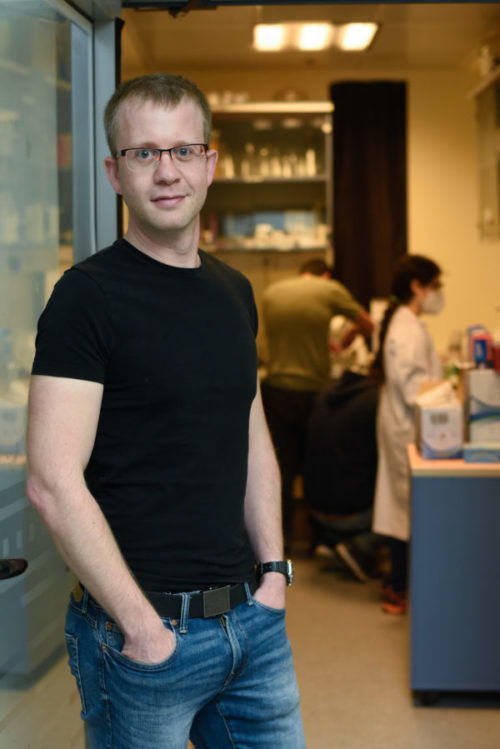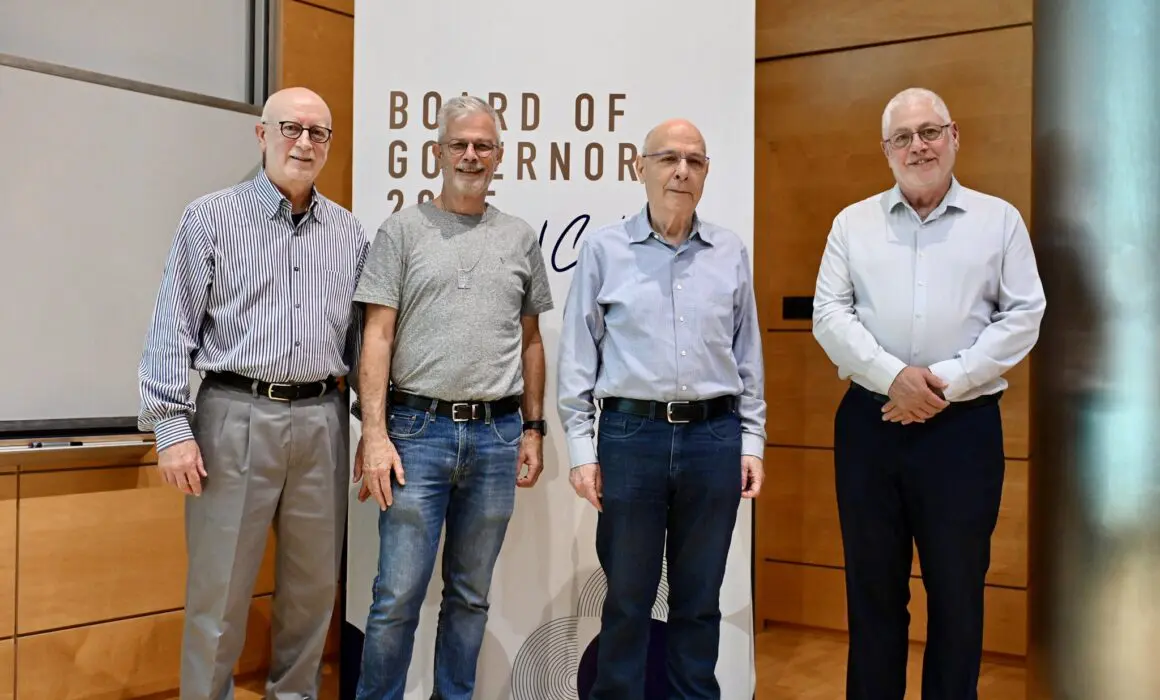Optical Lens Breakthrough Could Help Billions

Technion researchers have developed a way to make optical lenses in a cost-effective way. It’s an innovation that could be a gamechanger for 2.5 billion people. It could transform space research. And it all started with a whiteboard and a marker.
Although eyeglasses are cheap to make, in many parts of the world, they’re hard to come by. Yet without glasses, children find themselves struggling to follow along in the classroom. Adults lose their jobs because their vision has deteriorated so badly.
Faculty of Mechanical Engineering members Professor Moran Bercovici and Dr. Valeri Frumkin became obsessed with this problem. How could they make lenses more affordable?
They started by drawing a lens on their whiteboard. They knew they could take polymers, solidified liquids, and make rounded domes with them to create lenses. But liquids maintain a spherical shape only at small volumes. The larger the liquid becomes, the more gravity flattens it into a puddle.
But, Bercovici and Frumkin realized, if you make the lens inside a liquid chamber, you can make the sphere as big as you need, without the influence of gravity flattening it. As an added bonus, their method creates lenses in a completely waste-free process, while removing the need to polish the lenses. The lenses coming out of Bercovici and Frumkin’s lab have a surface roughness of less than a nanometer, one billionth of a meter. Compare that to traditional optical lenses, which have a surface roughness of 100 nanometers, or even the mirrors on NASA’s Webb Telescope, which have a surface roughness of 20 nanometers!

Prof. Moran Bercovici
The researchers note that the materials required to make lenses using this process are easily found online for just a few dollars. While they used UV rays to harden the lenses in their lab, they posit lenses could be hardened just as effectively in the sun. This will allow their technique to be used in less developed regions that lack the laboratory infrastructure Israel and the United States have.
“Our fantasy is to create an impact in countries with minimal resources,” Bercovici told Haaretz. “Just as in the well-known proverb, I don’t want to give them fish, I want to teach them how to fish. With this method, people will be able to make their own glasses.”

Dr. Valeri Frumkin
From Someone’s Face — to Space
The team has ambitions beyond optical lenses. They believe their method could also be used to develop complex optical components, which are used in pilot helmets, augmented reality systems, advanced projector systems, and elsewhere.
The manufacture of these complex optical components is expensive and time consuming, limiting their use. Bercovici and Frumkin’s method could reduce the cost and production time dramatically.
And NASA has already inquired about whether the team could create a very, very large lens — for their space telescopes. Current telescopic power is limited by the size of the lenses we can produce. With this latest development from the Technion, NASA researchers could be able to see exoplanets — planets outside our solar system, only visible with telescopes about ten times bigger than the most powerful ones we have today.
It may take a long time before we can see those exoplanets, but the Technion is already working on it. In late December, a lens making system developed by the team at Bercovici’s lab will be sent to the International Space Station to begin experimentation.
A NASA spokesperson told Haaretz, “the approach could lead to other space applications as well, such as in-space manufacturing of high-quality optical components for energy collection and transmission, scientific instruments, and medical devices — thus playing an important role in the emerging space economy.”
More About
More High-Tech Future stories

Wearable Microneedle Patch Offers Real-time Diabetes Tracking



